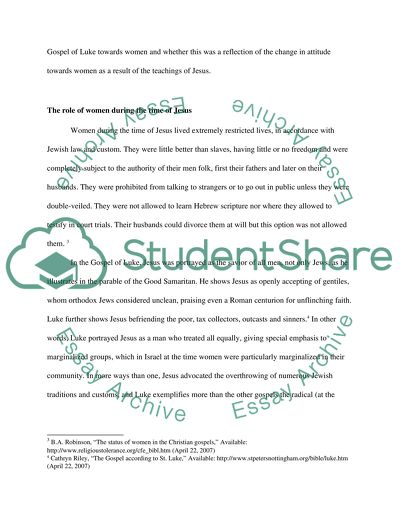Cite this document
(“The Women in the Gospel of Luke Essay Example | Topics and Well Written Essays - 2000 words”, n.d.)
The Women in the Gospel of Luke Essay Example | Topics and Well Written Essays - 2000 words. Retrieved from https://studentshare.org/miscellaneous/1533218-the-women-in-the-gospel-of-luke
The Women in the Gospel of Luke Essay Example | Topics and Well Written Essays - 2000 words. Retrieved from https://studentshare.org/miscellaneous/1533218-the-women-in-the-gospel-of-luke
(The Women in the Gospel of Luke Essay Example | Topics and Well Written Essays - 2000 Words)
The Women in the Gospel of Luke Essay Example | Topics and Well Written Essays - 2000 Words. https://studentshare.org/miscellaneous/1533218-the-women-in-the-gospel-of-luke.
The Women in the Gospel of Luke Essay Example | Topics and Well Written Essays - 2000 Words. https://studentshare.org/miscellaneous/1533218-the-women-in-the-gospel-of-luke.
“The Women in the Gospel of Luke Essay Example | Topics and Well Written Essays - 2000 Words”, n.d. https://studentshare.org/miscellaneous/1533218-the-women-in-the-gospel-of-luke.


